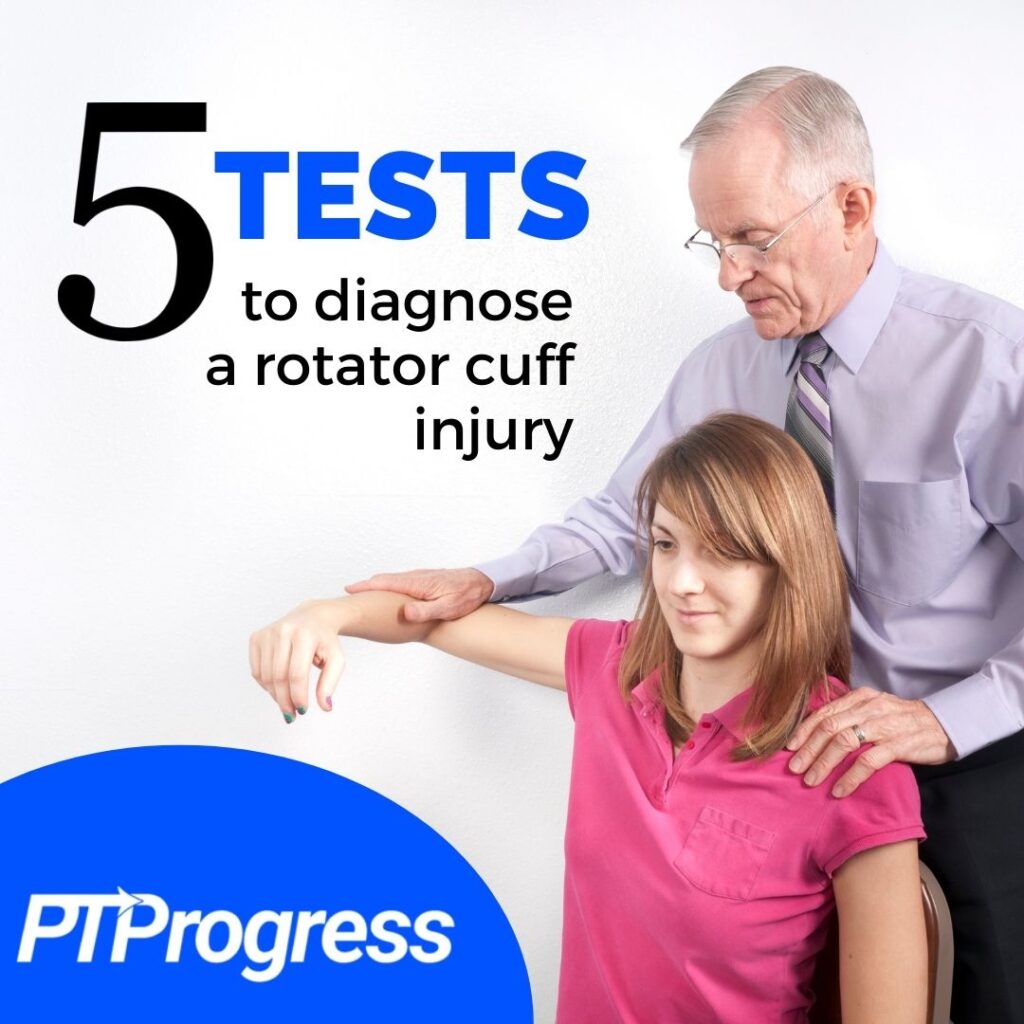
If you have pain in your shoulder or can’t lift your arm, you might have a rotator cuff tear. Beyond googling your symptoms and self-diagnosing, consider trying a few of the special tests we PTs use in the clinic to assess a rotator cuff tear.
To assess a rotator cuff tear, I usually ask my patients to perform 3-4 tests, but you could try as many as 5 on your own at home.
5 Tests to Diagnose a Rotator Cuff Tear
Below are 5 easy Physical Therapy tests you can use to identify whether your rotator cuff is compromised or torn.
If have someone else at home capable of following simple directions, ask them to help you by applying oppositional force. Otherwise, if you’re home alone, no worries – you can just use your good arm to test the troubled one.
1. Empty Can Test
This test targets one of the rotator cuff muscles that most commonly tears at the tendon: the supraspinatus.
To perform the empty can test, fully extend your bad arm and raise it to shoulder height, slightly outward from your body. Turn your hand downward, as if you are emptying a can or glass. Your palm should be open and your thumb pointing to the floor.
Next, using your other arm, press down on your raised arm at the elbow. Try to resist the motion. If someone is nearby, you could ask them to press down on your arm for you.
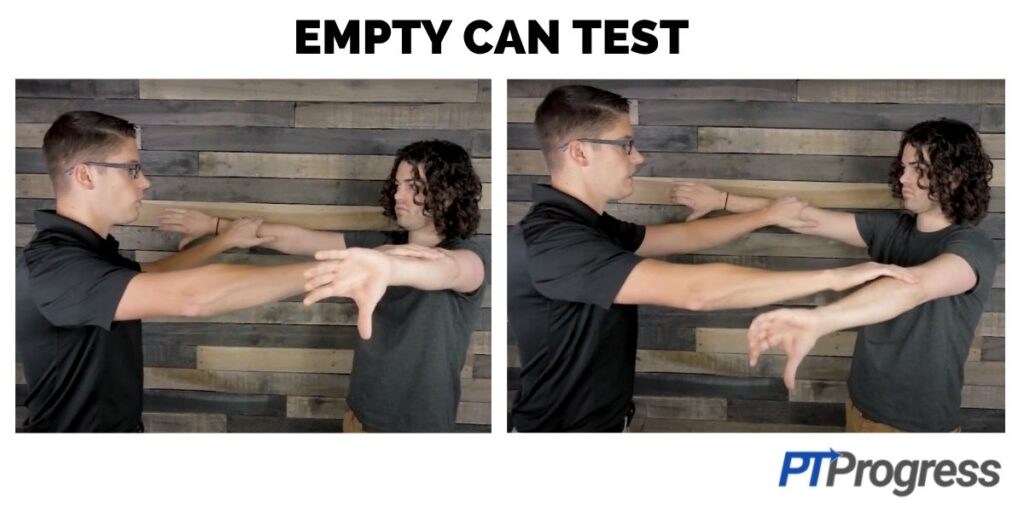
As you try to resist the pressure, pay attention to any pain or weakness you perceive in your arm, especially compared to your other arm. Pain or weakness may indicate a torn or compromised supraspinatus tendon.
2. Drop Arm Test
A rotator cuff tear will make it difficult for you to control your arm as it lowers, especially if any one of the 4 stabilizers of the rotator cuff are compromised.
To perform the drop arm test, simply raise your arm overhead in an arc, with as much range as possible. Now reverse the arc and lower your arm slowly, without assistance. If you cannot control the motion or if your arm drops suddenly, your rotator cuff might be compromised by a severe strain or tear at the supraspinatus tendon.
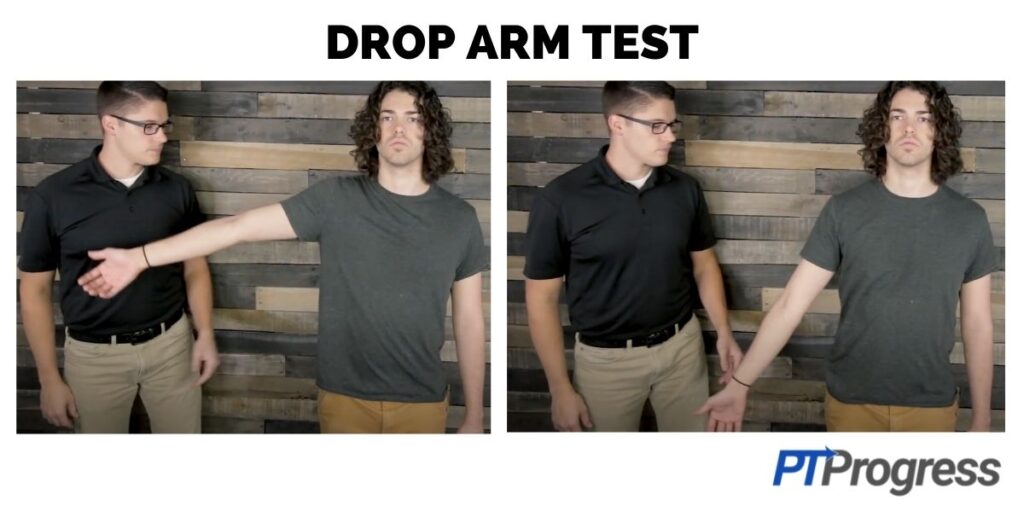
3. Lag Sign Test
While standing or sitting upright, bend your bad arm at the elbow to 90 degrees.
Using your opposite arm or a friend’s assistance, rotate your arm away from your body slightly, as if you’re about to throw a ball. Now remove any assistance and try to maintain this position.
If your arm drops or moves, you have a positive lag sign and your supraspinatus, infraspinatus, or teres minor tendon may be compromised or torn.
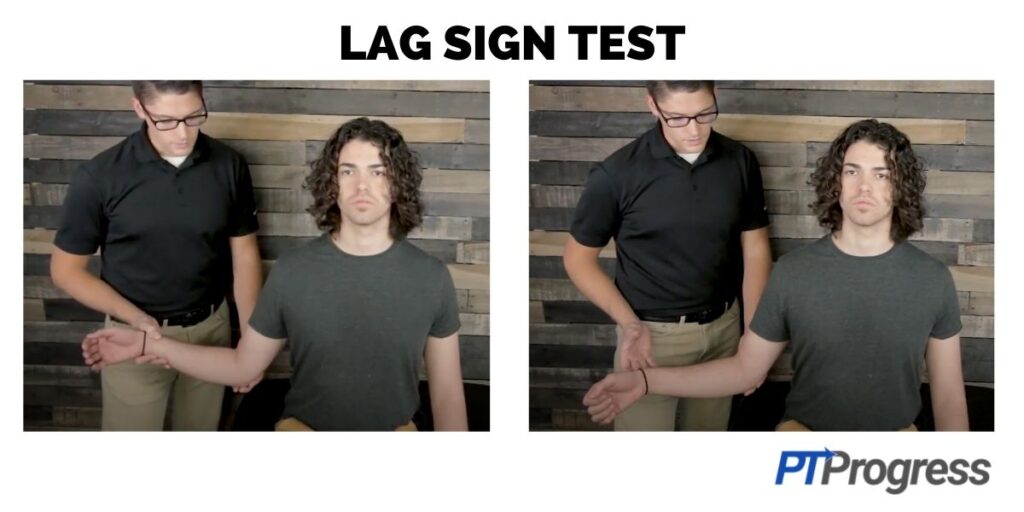
4. Infraspinatus Test
Your rotator cuff comprises 3 external rotators, one of which is the infraspinatus.
To isolate this muscle, make a loose fist and bend your bad arm at the elbow, so that your forearm is at 90º and the top of your knuckles faces forward. Keeping the elbow tight to your waist, apply pressure inward on your bad arm and try to resist it.
If you feel pain or weakness or are unable to hold the position, there’s a good chance you have a compromised or torn infraspinatus.
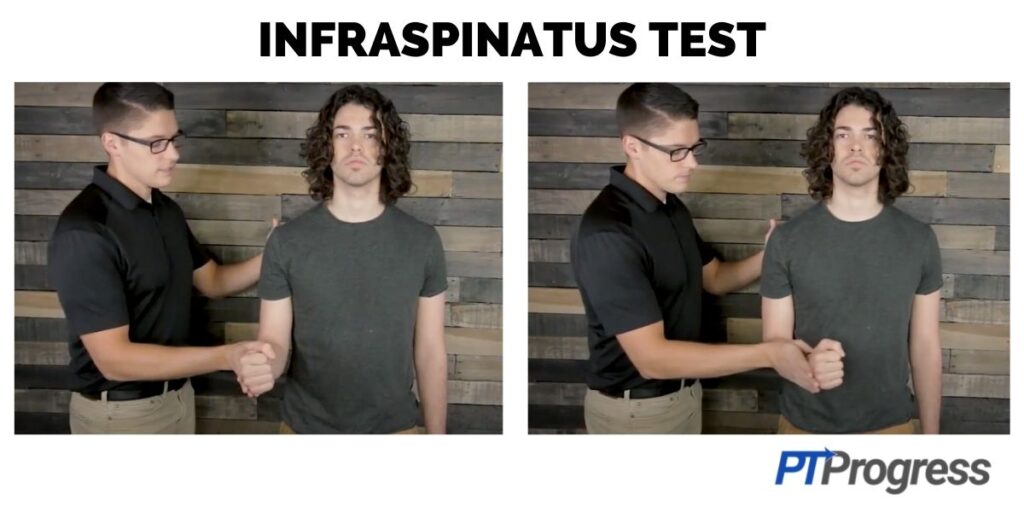
5. Lift-Off Test
This test will help you identify a tear or compromise in the subscapularis tendon, which moves the shoulder into internal rotation.
To perform the test, place the back of your hand against the center of your low back. Now try lifting your hand off your back. If you’re unable to do so without pain or weakness (or at all), you might have a subscapularis compromise or tear.
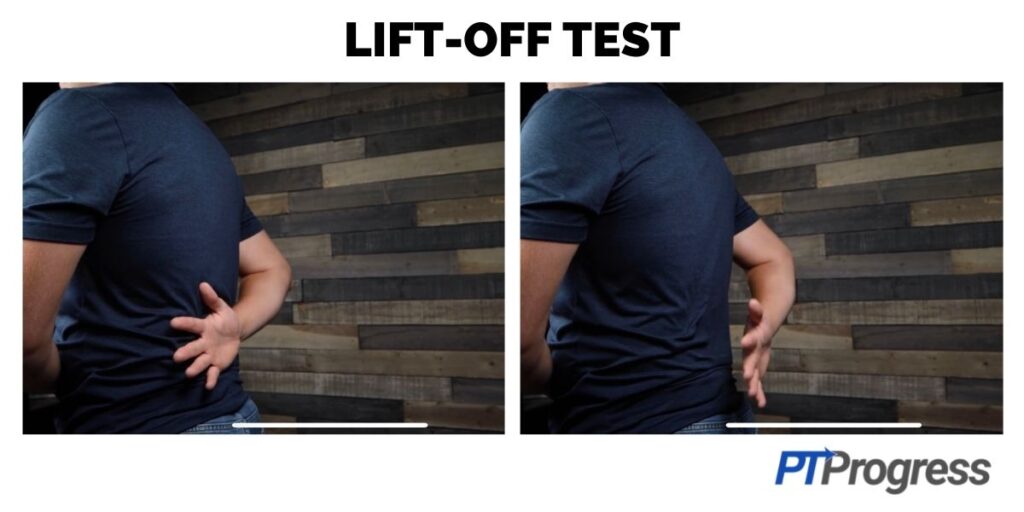
Diagnosing a Rotator Cuff Tear: Summary
So to review, I recommend the following tests for a rotator cuff tear:
- Empty Can Test
- Drop Arm Test
- Lag Sign
- Infraspinatus Test
- Lift-Off Test
If you conclude from these tests that you have a torn rotator cuff, be sure to follow up with your doctor or physical therapist.
Special Tests for Rotator Cuff Tear
Physical Therapists conduct special tests as part of their overall assessment. Before provoking symptoms with orthopedic tests, your PT will gather as much information as possible – from your medical history, through observation, and based on how you complete certain movement tests.
Although a movement test can be a telltale sign of an injury, your PT will use it simply as a tool to confirm or piece together a diagnosis. Therefore, it’s a good idea to perform more than one test so that you can confirm the result and narrow down the issue.
In the meantime, you can learn more about rotator cuff tears here. Your PT may eventually recommend you do these 10 exercises to treat your rotator cuff.

